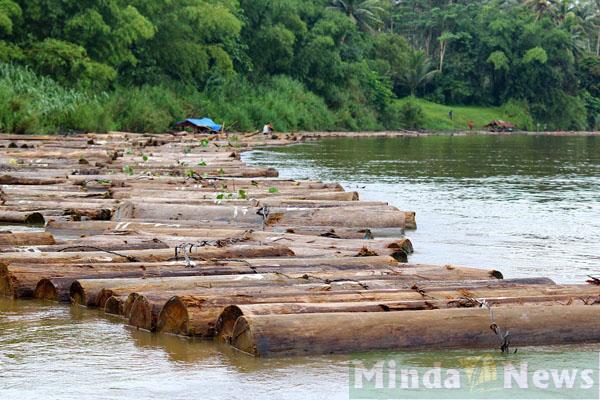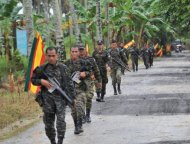MANILA, Philippines—The government is now focusing its crackdown on
illegal logging in six provinces in Mindanao where loggers still reign
in “connivance” with local, environment and police officials.
Antilogging officials on Friday pinpointed Agusan del Sur, Agusan del
Norte and Surigao del Sur in Region 13 or Caraga Region, and Compostela
Valley, Davao del Norte and Davao Oriental in Region 11 as “hot spots”
where illegal logging has thrived more than a year after President
Benigno Aquino III banned logging nationwide.
“Caraga and the Davao peninsula are the corridors [of illegal
logging],” said retired Gen. Renato Miranda, chief of the Illegal
Logging Task Force whose headquarters was transferred to
Butuan, Agusan del Sur last week to eliminate logging at its source on Mr. Aquino’s orders.
Enforcement problems
Environment Secretary Ramon Paje admitted having a tough time
enforcing Mr. Aquino’s Executive Order No. 23, which bans logging
nationwide, on the six provinces because of the connivance of illegal
loggers with local government executives, environment field personnel,
and police officials.
“We’re now focusing on six major problematic provinces. They’re the
remaining provinces where we have not contained logging because of
connivance among local officials, DENR field personnel, police and other
regulators,” he said.
Interior Secretary Jesse Robredo said five mayors were now being
investigated while eight police officials in Caraga were suspended for
alleged involvement in illegal logging.
Philippine National Police Director Nicanor Bartolome had also
expanded the one-strike policy to include police commanders, who would
be relieved if they fail to confiscate illegal logs.
With Mr. Aquino taking a direct hand in the campaign, the departments
of environment, interior, police, customs and law enforcement agencies,
have mobilized all their resources to the six provinces.
Friday morning, a multi-agency team seized 18 container vans of
lumber at the Davao port, Paje said, a week after 55 container vans of
lumber at the Manila North Harbor, also from Davao, were confiscated.
“The President had wanted this stopped yesterday,” said
Paje, who relieved 31 key officials in Regions 11 and 13 last Saturday for failing to curb illegal logging.
Paje has personally tapped Assistant Secretary Marlo Mendoza,
coordinator of the National Greening Program, to replace the relieved
regional director in Region 13, and oversee the crackdown on illegal
logging in the region. Paje said he would oversee the NGP in the
meantime.
New Region 11 director
“We need a very credible person to implement this program,” he said of Mendoza, who headed Bantay Kalikasan for five years.
Paje also designated Mark Fragada as the new Region 11 director,
crediting him for the seizure of the lumber in Davao port Friday.
“The major strategy is to have a laser-focused attention on these
areas. I’m with the President in stopping this as fast as possible,” he
said. “With new people on the ground, we’re optimistic we’ll be able to
neutralize illegal logging.”
The strategy would be two-pronged: continuing operations against the
loggers, and livelihood for log cutters through the DENR’s reforestation
program, according to Paje and Miranda. PDI













































